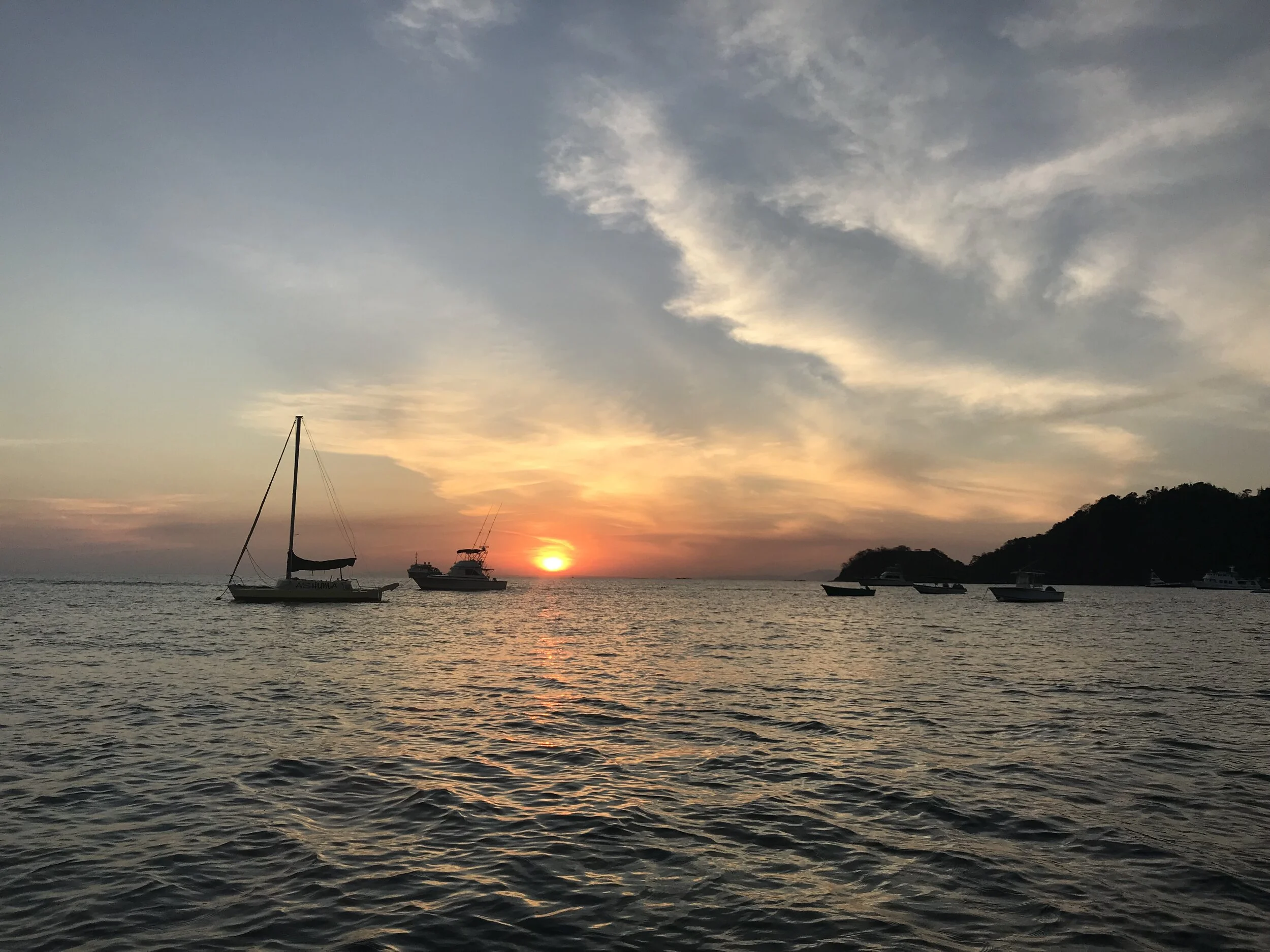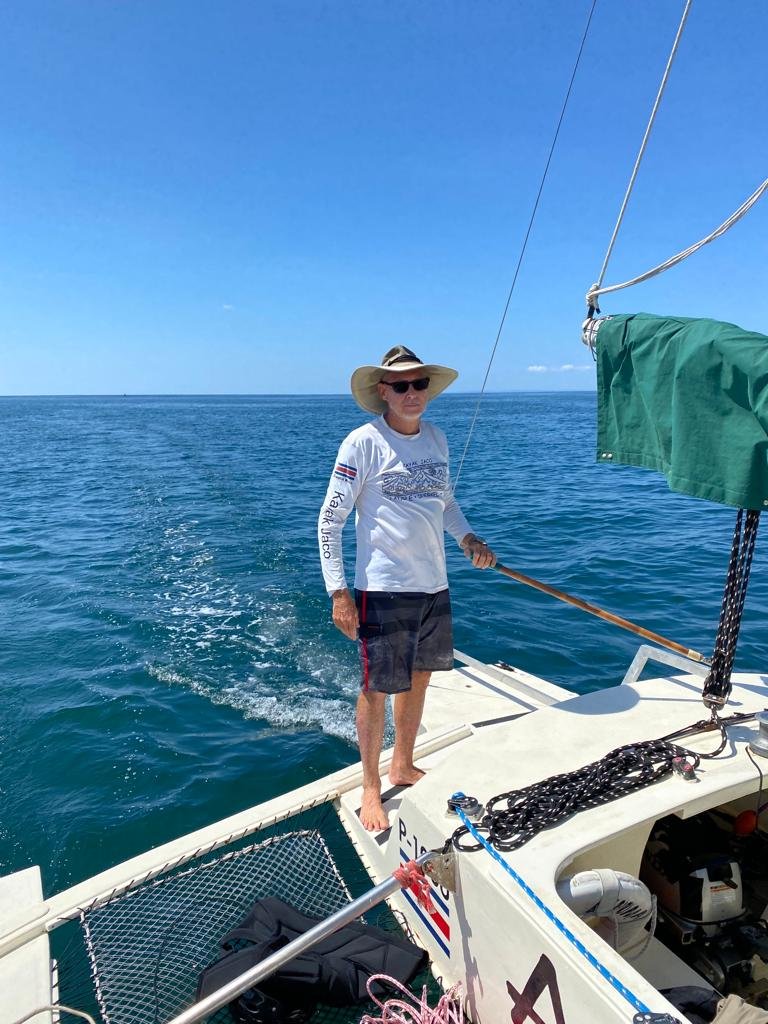Ashuma
When you book a tour with Joy Ride Sailing, you will be sailing aboard Ashuma.
She is a Jim Brown Searunner 25 ft trimaran. She is 25ft long and 16ft wide and was built in 1979, right here in Costa Rica. We’ve been sailing her and maintaining her to a high standard since 2008. She has some wonderful features that make her excellent for what we do. Private charter only, day sailing on the calm Pacific Ocean with a maximum of 6 guests.
Ashuma does not heel over, she stays flat on the water, like a catamaran, but better. She has lots of very comfortable, usable nets. There is enough net space for everyone to stretch out and enjoy. Also, there is a large comfortable cockpit in the middle of the boat with a bimini top so that shade is always there if you’d like it. There is an emergency head (boat toilet) if needed and a nice solid ladder for making it easy to get out of the water.
She sails beautifully and our goal on the tour will be to SAIL but we have a reliable engine if the wind does not cooperate.
all-inclusive fun
Ashuma is equipped with personal floatation devices for all passengers including special snorkeling vests, and even some good old-fashioned pool noodles so that guests with any level of swimming skill/experience can hop in the water and enjoy the warm blue Pacific.
All snorkelling equipment is provided for you (unless you prefer your own) and your tour includes a guided tour so even first-time snorkelers can feel comfortable.
If snorkeling isn’t your thing…don’t worry… the manta rays love to jump and are easily visible from a comfy spot on deck. We quite often get visits from pods of dolphins, and during whale season have seen humpbacks and orcas.
the specs
I know some of you avid sailors will have lots of questions about Ashuma’s Specs… if you want to deep dive into things like water displacement ratios, beam width and the like, you can copy this link. https://www.searunner.com/index.php/searunner-25
For the rest of you layman I will say that Ashuma is an ultralight wooden cutter and was built by Jim Brown right here in Costa Rica. As with all catamarans, she is well-balanced, doesn’t heel while sailing, and has a shallow draft which allows her to anchor in places that other boats can’t.
She is built to last, and to handle bad weather with grace, although we seldom get bad weather here in Herradura. She has a hull speed of 6.44 knots (although we have had her going a little faster than that in favourable winds).
She is equipped with a 9.9 Honda 4-stroke engine to get us home safely if the wind lets us down.







